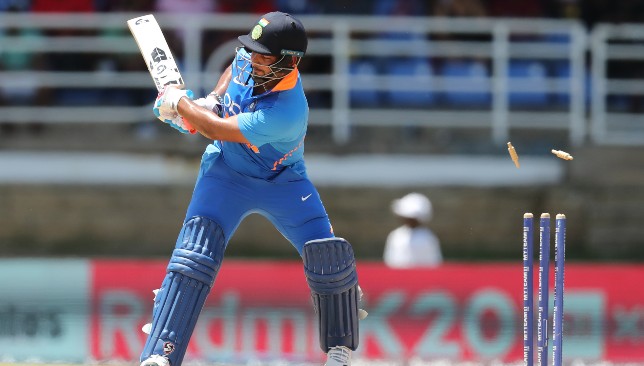
South Africa foiled India’s attempts to wrap up a second successive T20 series win after the visitors prevailed by nine wickets in the third and final T20I at Bengaluru on Sunday.
Virat Kohli and his men could only muster 134-9 after electing to bat first and were ultimately crushed by nine wickets in the match with the series ending in a 1-1 tie.
As such, the Men in Blue have now managed to win just one out of their last five bilateral T20 series with the sole victory coming against the West Indies last month. With the 2020 T20 World Cup in Australia just over a year away, the Indian team management have a huge task on their hands in preparing a potentially title-winning team.
Here, we look at the three things they have learned from their drawn series with South Africa.
No luck for the finger spinners
Wrist-spin had been one of India’s chief weapons in limited-overs cricket over the last two years but the team have opted to go in a different direction since the end of the 2019 World Cup. The wrist spin-twins of Kuldeep Yadav and Yuzvendra Chahal have now been ignored for selection for two series in a row but their replacements haven’t exactly set the stage on fire.
On a Bengaluru pitch where South Africa’s spin duo of Bjorn Fortuin and Tabraiz Shamsi made merry, their India counterparts in Washington Sundar and Krunal Pandya failed to find the same joy in a wicket-less showing. The two finger spinners had failed to pick up a single wicket in the second T20 at Mohali as well but their display on Sunday was particularly flat with Pandya proving to be extremely expensive.
It will now be interesting to see if the Indian team management decides to stick with the finger-spin approach in the next T20 series against Bangladesh but a recall for Kuldeep and Chahal is looking like a tempting option currently given their past success in white-ball cricket.
Pant drowning amid public criticism from team management
The spotlight in the series was firmly on Rishabh Pant after skipper Kohli, head coach Ravi Shastri and batting coach Vikram Rathour had all fired a warning to the youngster over his erratic shot selection.
However, asking Pant to tread a fine line between careless and fearless cricket has proven to be counterproductive with the wicketkeeper batsman failing to impose himself on both games. Having had to curb his natural attacking instincts, Pant seemed to be in two minds every time he was at the batting crease and the crippled confidence showed in both of his timid displays which resulted in just 23 runs in total.
A lack of explosive firepower down the order has been one of India’s biggest limited-overs shortcomings in recent times but the mixed signals being sent by the team management to Pant is not helping the youngster in filling that void. The southpaw’s Test and IPL showings so far warrant an extended run in the limited-overs squad and India will do well to not tinker with his natural game too much in the lead up to the T20 World Cup.
Change in tact from India but needs time
India’s approach from the very start in the third T20 was a changed one with Kohli going against the historical evidence at Bengaluru and electing to bat first. Stacking the team with capable batsmen all the way down to No9 was a marked shift in strategy as well compared to the earlier approach of selecting specialist batsmen and bowlers for the job.
While India’s limited-overs template of the past had very much been for the top-order to consolidate and keep wickets in hands for the death overs, they took the attack to South Africa’s bowlers from ball one on Sunday before paying the ultimate price.
Wickets continued to tumble even as the batsmen kept going on the offensive and the end result was a modest total of 134-9. It is a strategy which has been employed to lethal effect in ODI cricket by latest world champions England and India will need time to bed in that philosophy.
The team management cannot be faulted for trying out something different with India’s previous one-dimensional game-plan costing them dearly in two successive World Cup semi-final appearances as well as the 2017 Champions Trophy final defeat to Pakistan.